ATCOR – Cs corrector for TEM with optimized aberration correction for phase contrast TEM with large fields of view
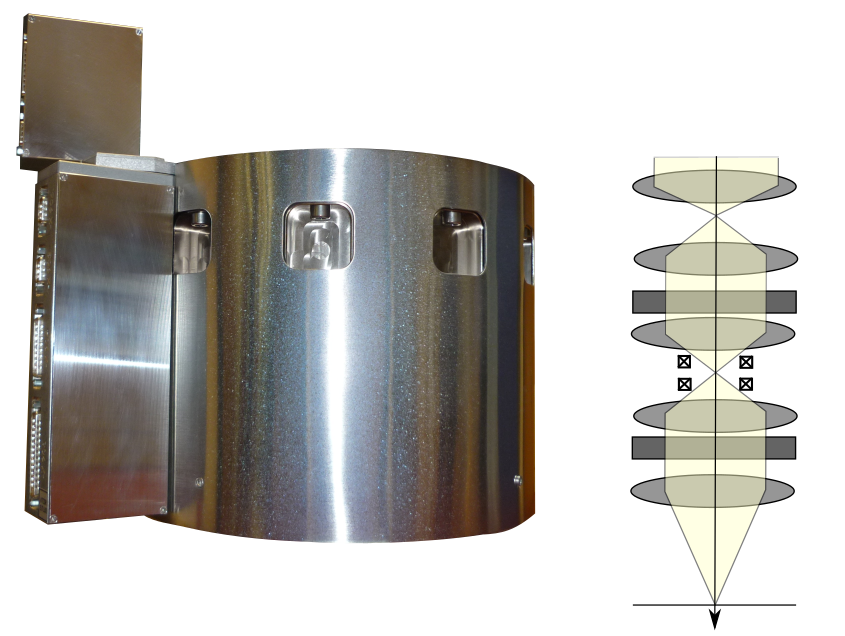
ATCOR - Cs corrector for TEM with optimized aberration correction for phase contrast TEM with large fields of view
The ATCOR is the advanced development of our well-established CETCOR Cs-corrector for transmission electron microscopy (TEM). Due to the new length-optimized hexapoles the new ATCOR combines the CETCOR properties (correction of spherical aberration Cs and all other aberrations up to 3rd order), with the correction of the six-fold astigmatism A5. Moreover the ATCOR corrects all aberrations of 4th order (A4, B4, D4) and parasitic(+) low-order off-axial aberrations (A1g, A1G, C1g, B2g), due to the newly integrated middle transfer optics and additional stigmators. Based on the additional minimization of intrinsic(++) off-axial aberrations (S3g, A3g), the ATCOR provides an aberration-free field of view which is 2.5x larger than that of the CETCOR. The correction of all aberrations up to including 4th order and of A5 allows for a constant phase contrast transfer function (PCTF) up to the information limit. This is especially useful for application with cold field emission electron guns or with monochromated illumination for ultra-high-resolution TEM. This makes the ATCOR the optimal TEM corrector for ultra-high-resolution TEM, where a wide-ranging phase contrast transfer band is necessary, as well as for aberration corrected TEM applications with large 2kx2k detectors. The efficient use of even larger detektors (e.g. 4kx4k) requires correction of the off-axial coma. This is achieved with our BCOR.
(+) parasitic aberrations = aberrations that occur due to tolerances and uncertainties in the mechanical build-up of the corrector.
(++) intrinsic aberrations = aberrations that occur and are unavoidable due to the optical design of the corrector.
Features:
- Advanced Hexapole-type Cs-corrector for TEM
- Correction of all axial aberrations up to including 4th order (A1, B2, A2, C3, S3, A3, A4, B4, D4)
- Correction of six-fold astigmatism A5 for the entire high-voltage range. Thereby uniform phase contrast transfer band for large optical apertures.
- Particularly suitable for low-kV TEM applications
- Correction of low-order parasitic off-axial aberrations (A1g, A1G, C1g, B2g)
- Minimization of intrinsic off-axial aberrations (S3g, A3g). Thereby x2.5 larger aberration-free field of view compared to the CETCOR.
- Identical dimensions and interfaces as for CETCOR. Therefore directly compatible with existing CETCOR systems.
- Compatible with: JEOL NEOARM. Others on request.
Specifications:
- Device dimensions: 246 x 396 x 306 mm
- Mode: TEM
- High voltage range: 30kV - 200 kV
- Maximum resolution: aberration-free aperture up to 40mrad. i.e. for resolution as a function of high voltage:
- 40 mrad (aperture angle) - 30 kV (high voltage) - 174.5 pm (resolution)
- 40 mrad (aperture angle) - 80 kV (high voltage) - 104.5 pm (resolution)
- 40 mrad (aperture angle) - 200 kV (high voltage) - 62.75 pm (resolution)
Application:
- High-resolution phase contrast imaging up to the information limit of state-of-the-art TEMs
- Ultra-high-resolution TEM using monochromatic illumination
- Low-kV TEM
Contact
Do you have any questions about the product or the application and extension for your e-beam system? Please contact us at info@ceos-gmbh.de
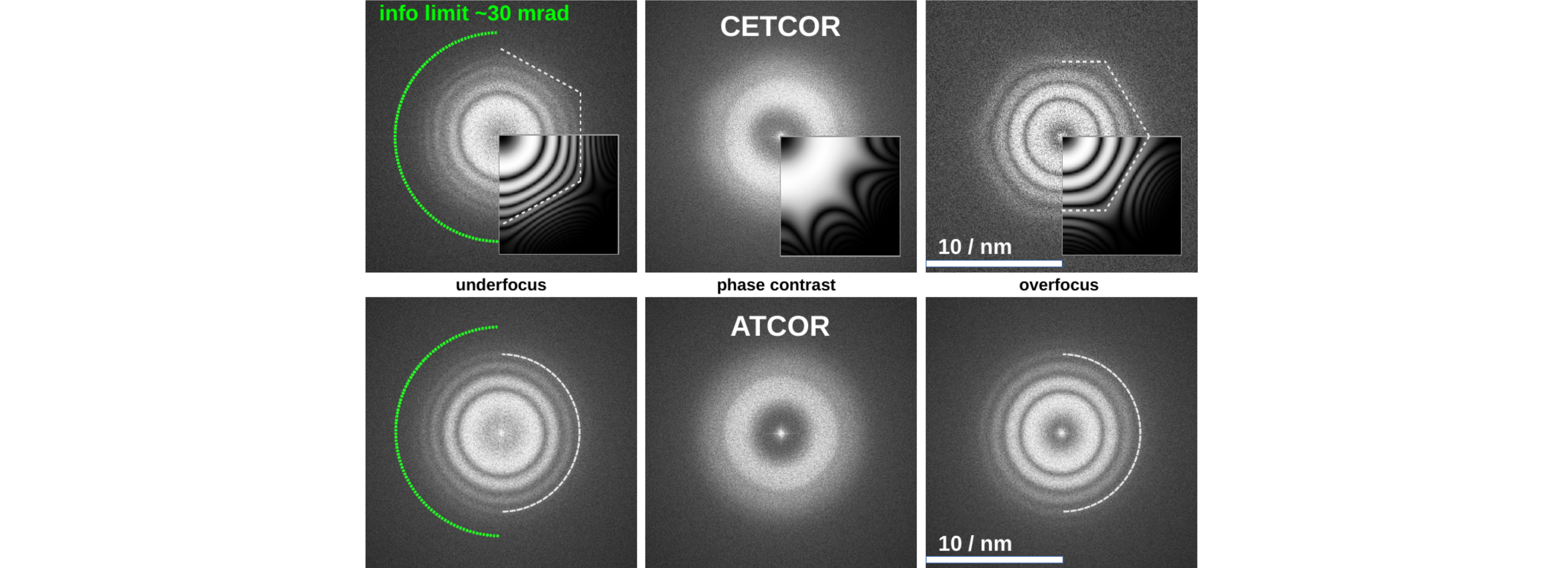
The diffractograms taken with the CETCOR (top row) at 80 kV are significantly affected by six-fold astigmatism: Within the microscope‘s information limit (green half circle) they show a six-fold symmetry which rotates about 30 deg between underfocus and overfocus. The experimental result is in agreement with the simulated diffractogram inlay that uses the measured aberration coefficients. The ATCOR (bottom row) is free of A5, therefore, the diffractograms are not affected by six-fold astigmatism. All data was recorded at 80 kV using a JEOL JEM-ARM200F NEOARM electron microscope with high-resolution objective pole piece and a cold field emission electron gun.
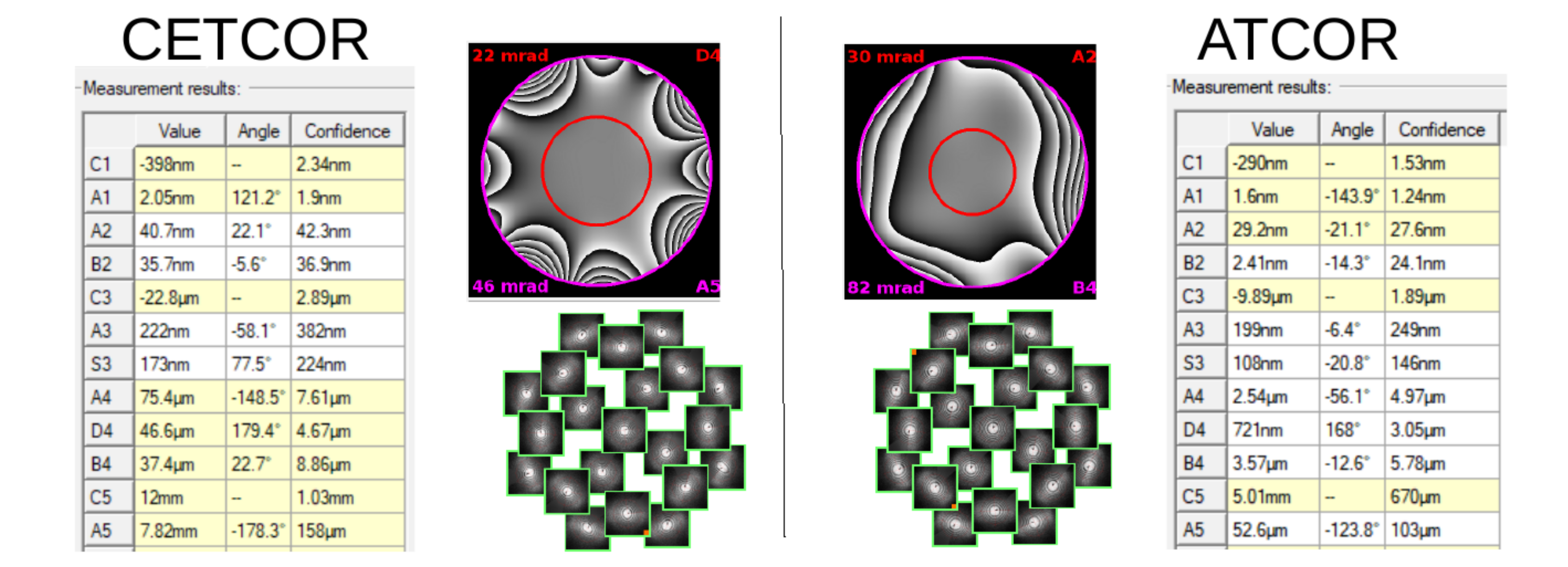
Calculated phase plates of residual aberrations (upper images) from the measured coefficients (table) as determined from the Zemlin-Tableaus (lower images) for CETCOR and ATCOR. Left side: The CETCOR can only partially correct for fourth-order aberrations and intrinsically suffers from six-fold astigmatism A5. Therefore, the aberration-free aperture (π/4 criterion) only amounts to 22 mrad (red circle). Right side: The ATCOR is free from A5 and allows correction of all fourth-order aberrations. An aberration-free aperture of > 30 mrad can easily be achieved. Moreover, the moderate positive fifth-order spherical aberration C5 is favorable for tuning a uniform PCTF to ultra-high resolution.
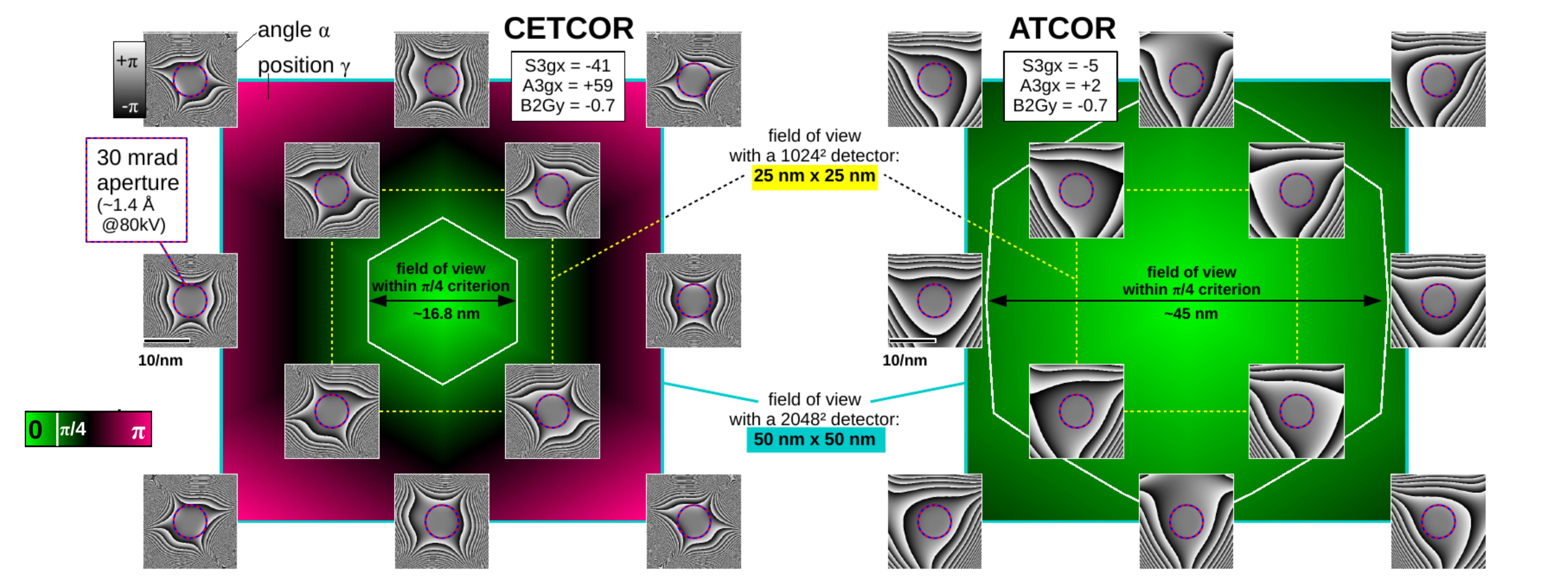
Two-stage hexapole correctors intrinsically add a certain amount of off-axial star aberration S3g and off-axial four-fold astigmatism A3g, which limit the number of well-resolved pixels in the image. Those aberrations are considerably reduced in the ATCOR (right) enabling a 2.5x larger aberration-free field of view compared to the CETCOR (left). The white marked area corresponds to the field of view, where the sum of off-axial aberrations surmounts the π/4 –limit from image center towards the outside for the first time.
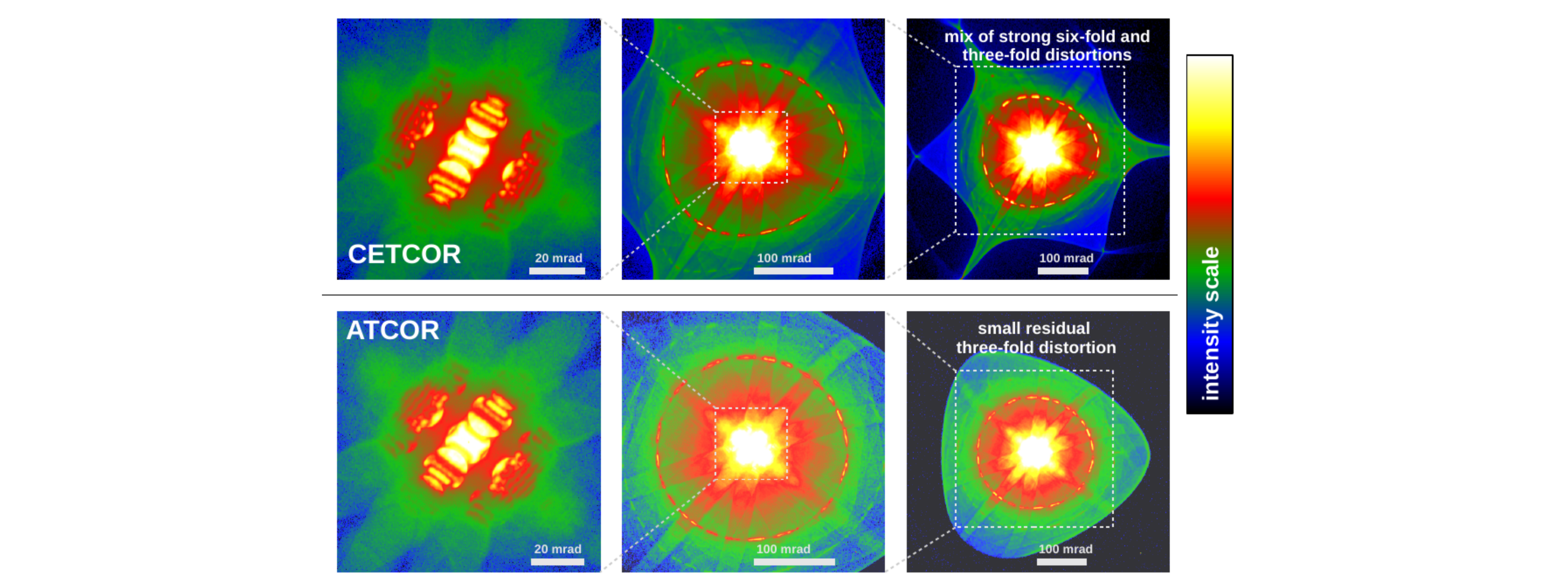
Convergent Beam Electron Diffraction (CBED) images of a very thick Silicon sample in 112-orientation, with 8 mrad convergence half-angle. Upper row: The diffraction patterns imaged with the CETCOR show significant six-fold and three-fold distortions. The example of a Si-CBED-pattern shows heavily bent Kikuchi-bands at the 100 mrad-level. Lower row: The corresponding distortion aberrations are significantly smaller in the ATCOR, which gives rise to a much more uniform diffraction pattern exceeding 100 mrad, which is very beneficial for diffraction work in aberration-corrected TEM.

